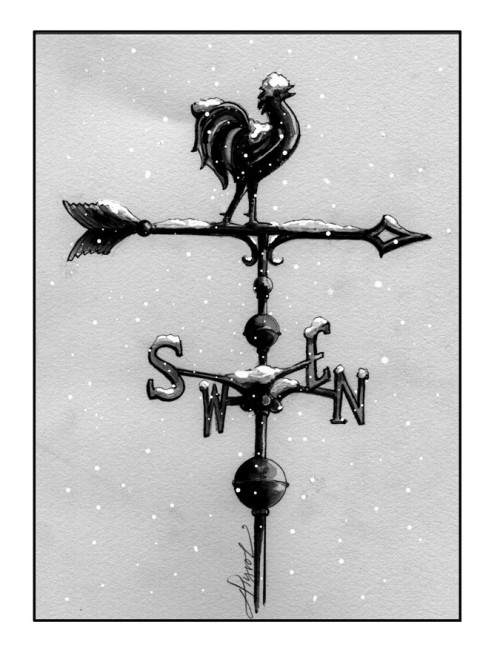
If you’re a fan of a good, old-fashioned New England winter, with snow piling up under the eaves, you’ll be pleased to know that we’re going to have a La Niña this year. If you can’t tell a La Niña from an El Niño, and also can’t recall old-fashioned New Englanders speaking Spanish when talking about the weather, read on.
The story starts in Peru a century ago, where coastal fisherman kept close track of the ocean’s temperature because it affected their ability to catch fish. They occasionally noticed that the surface temperature became abnormally warm right around Christmas and named the phenomenon “El Niño” since it arrived just about the same time as the Christ child’s birthday. Fast forward to today, and this abnormal warming of the tropical waters in the eastern tropical Pacific is known to meteorologists around the globe as ENSO, or the El Niño Southern Oscillation.
The phenomenon first entered the public consciousness in the 1980s, when several very strong El Niño years were linked to crazy weather around the globe. Since then, La Niña has also entered the lexicon, referring to the years when the eastern tropical Pacific is at its normal, or cooler, temperature.
The ENSO pattern is relatively easy to predict in advance, at least 3 to 4 months, and the weather pros are calling for a moderately strong La Niña this year. Looking back over weather data for the past 30 years, we know that for us here in the twin states, La Niña conditions lead to average temperatures and above-average precipitation, especially towards the tail end of the winter. The National Weather Service currently sees a 60 to 70 percent chance that we’ll receive an extra 7 to 9 inches of snow this winter in New Hampshire and Vermont.
Last winter, for purposes of comparison, was a strong La Niña winter and featured lots of snow, especially late in the season. The winter before was a moderate El Niño, and many valley locations were snow-free by the middle of March.
But with something as complicated as weather forecasting, there’s always more to the story. While a La Niña is relatively easy to forecast, the North Atlantic Oscillation (NAO) is not. This is the second major pattern that affects our winter weather, and it’s hard to predict more than a few weeks in advance.
Technically, the NAO is a measure of the relative air pressure at the ocean’s surface between Iceland and the Azores. More generally, it’s an indication of where the cold, artic air of mid-winter is piling up – on our side of the North Pole or on the Siberian side. When it’s on our side, the oscillation is said to be negative, which is easy to remember because it’s what our air temperatures are likely to be, too.
When the cold air is piled up on our side, it pushes the storm tracks to the south, sometimes well south of us here in New Hampshire and Vermont. Remember a few winters back when Washington, DC, had record snows while we shivered along with barely enough snow to cover the ground? The NAO was strongly negative that winter, so much so that it was “too cold to snow” here in New England.
Of course, when the cold air is piled up on the Siberian side, it’s likely to rain or cause an ice storm here, so be careful what you wish for.
The early word right now is that we’re headed toward a moderately negative North Atlantic Oscillation this winter, which, in combination with a moderately strong La Niña, should make for a good snow winter. That said, there are still many local details that could push the snow totals a long way in either direction. For example, early snow cover: snow-covered ground tends to chill the air above it, so what happens early in the winter will have an impact on what happens later. An open Christmas might mean that the first snowfall of January is slightly warmer than it would have been if it fell on top of a thick snow pack. Maybe the snow turns to rain at the end, or maybe it ends up as a few inches of mashed potatoes instead of a foot of fluffy stuff. These minor effects can turn inches of snow into feet of snow, or vice versa.
But right now, the broad outlook is for snow, and hope springs eternal for fans of winter. Time to get out the shovels, sleds, and snow tires.

